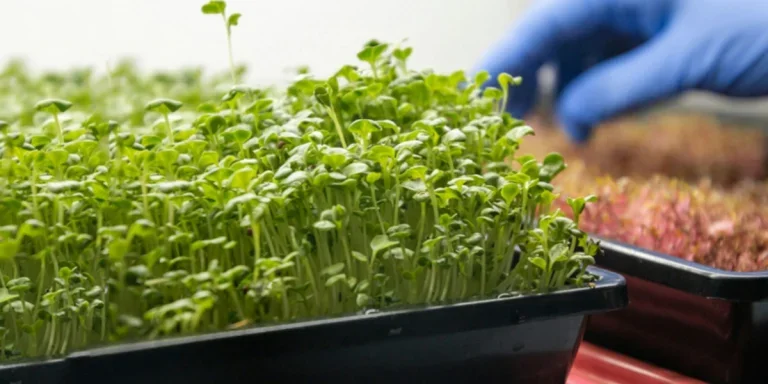Microgreens, also called micro-vegetables or baby greens, may be small, but they’re slowly taking over the world’s vegetable market. Not to be confused with sprouts, these seedlings of specific vegetable species and aromatic herbs have helped fuel an alternative form of cultivation and consumption, change the eating habits of hundreds of people, and trigger a small but significant agricultural revolution.
This article will explain why microgreens are increasingly in vogue and how online and brick-and-mortar shops can leverage this trend to drive sales and grow revenue.
Table of Contents
Reasons behind microgreens’ success
Microgreens: Kits and materials needed to grow them
Conclusion
Reasons behind microgreens’ success

According to data from Insight Ace Analytic, the microgreens market was valued at USD 1.77 billion in 2022 and is forecast to grow at a 14.31% CAGR to reach USD 5.82 billion by 2031.
Microgreens represent a significant agricultural market innovation that requires less water and space than traditional crops, making them a sustainable choice for both home and commercial growers as they only need kits or trays to grow them.
Microgreens went from being a niche product in 1980s Southern California, the mecca of healthy eating and living, to being used in the catering sector before becoming a foodstuff favored for their flavor, nutrients, and superfood status.
Their winning combination of high vitamin, mineral, and antioxidant content, as well as other nutrition-related benefits, has drawn significant research in the last decade. In addition, growing microgreens, which can be done indoors, is relatively simple for household consumption or wholesale reselling. They do not require special attention, and after a few days of incubation in the dark, seeds can grow using artificial or natural light (as long as it is not direct). After one to three weeks of growth, they’re ready for harvest.
Microgreens: Kits and materials needed to grow them
From broccoli to red cabbage and kale, companies and private consumers worldwide are looking to buy what they need to grow their little greens. This represents a great opportunity for stores wanting to ride this health wave trend. By stocking all the necessary kits and materials, businesses can cater to these growing market demands as well as potentially increase profits by incorporating this popular product in their inventory.
Microgreens’ seeds and varieties
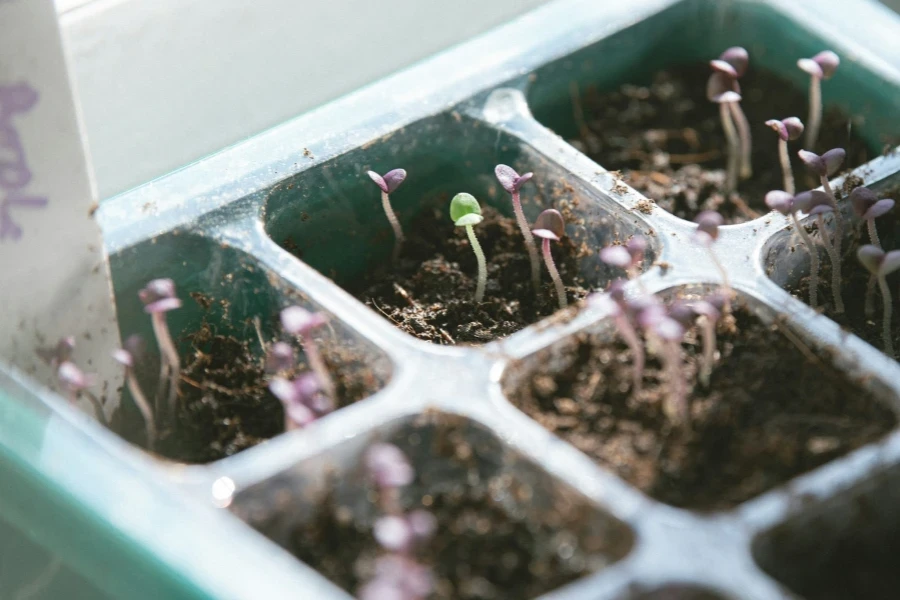
In many places in the world, microgreen seeds can be bought from organic markets as well as from specialized suppliers and some large-scale retail outlets.
Any vegetables that grow rapidly are ideal for growing microgreens. From lettuce and radishes to rocket, peas, lentils, spinach, and onions, there is a wide range of microgreen options available.
The same goes for some species of aromatic plants, such as basil and coriander or sesame, sunflower, and mustard seeds, which can also be grown at home for a fresh supply of herbs and seeds.
Which soil or growing medium to use for microgreens
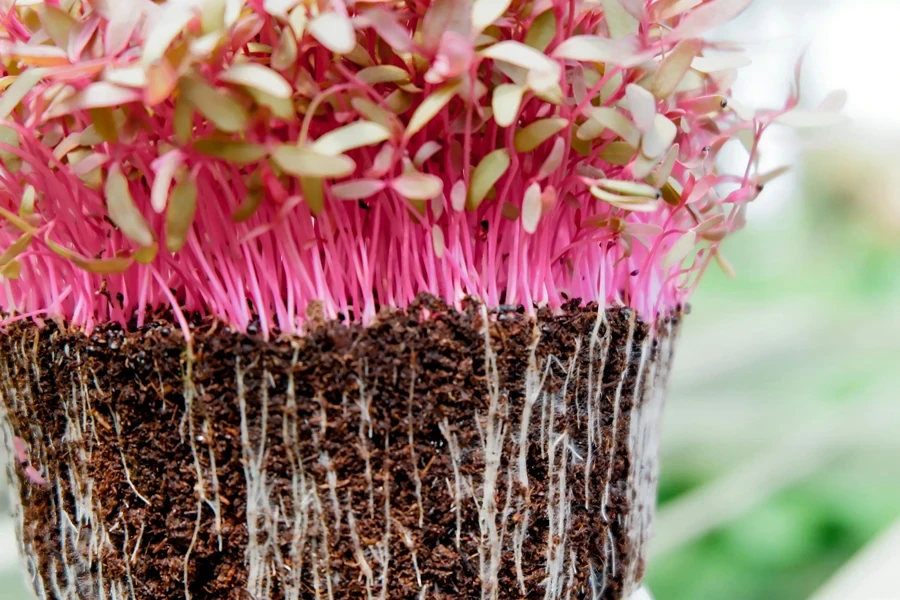
Microgreen kits are often used for indoor microgreen cultivation. These include containers (such as trays and tubs) with a perforated bottom to facilitate root growth and eliminate excess water so as to prevent harmful water stagnation. The container’s dimensions will vary depending on the amount of greens required.
The choice of substrate is a crucial decision for microgreen growers. Those who opt for soil seek an optimal medium for these micro-vegetables, one that is highly porous, moderately acidic, free of heavy metals, chemicals, or pollutants, and well-drained and aerated. This substrate plays a vital role in the successful growth of microgreens.
Other customers choose to grow microgreens in an inert material (such as expanded clay, perlite, or rock wool) capable of supporting the plant, whose roots are immersed in water with added mineral salts or fertilizers to ensure the crop receives the necessary nourishment. The hydroponic cultivation system can be set up as an “open cycle,” in which the water that passes over the roots of the plants is discharged and lost, or a “closed cycle,” if the water in the cultivation tanks is recovered.
Exposure to light
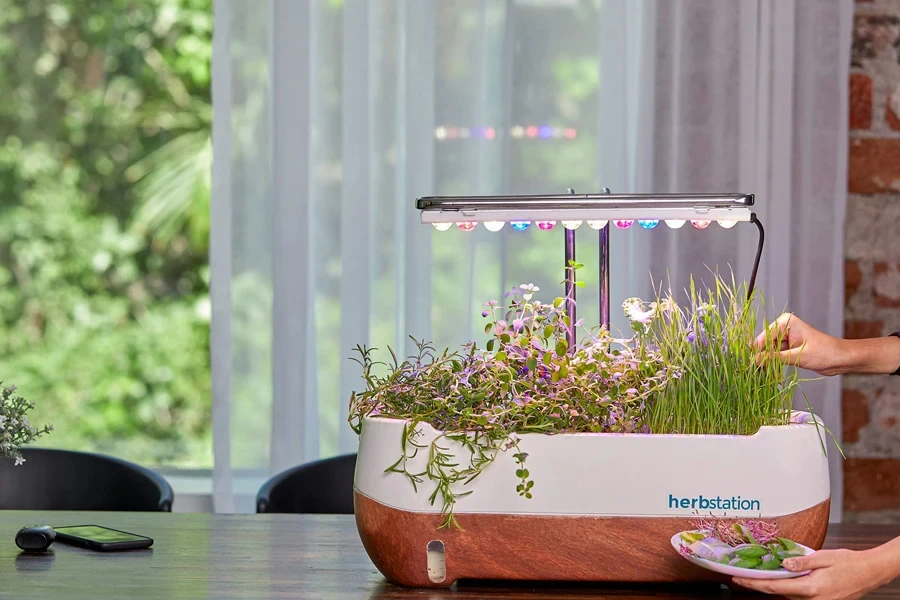
Microgreens must germinate without light at a temperature suitable for the species selected. Many microgreens kits already come with a cover, and should be kept in a dark place to ensure the right conditions for young plants to develop and grow rich in vitamin E, vitamin C, and other nutrients.
In this “blackout” phase, however, humidity must also be present, which favors germination. For this reason, after sowing, the cultivation trays must be covered (for example, with a black plastic sheet) to increase the temperature inside them and maintain the humidity of the substrate and the air.
Once germination has occurred, generally after two to three days, the cover is removed and the temperature lowered. After germination in the dark, microgreens must be exposed to light for no less than 14 hours a day to grow well. To ensure that the seedlings receive the right amount of light, growers use LED lamps specifically designed for lighting microgreens.
Watering and storing microgreens
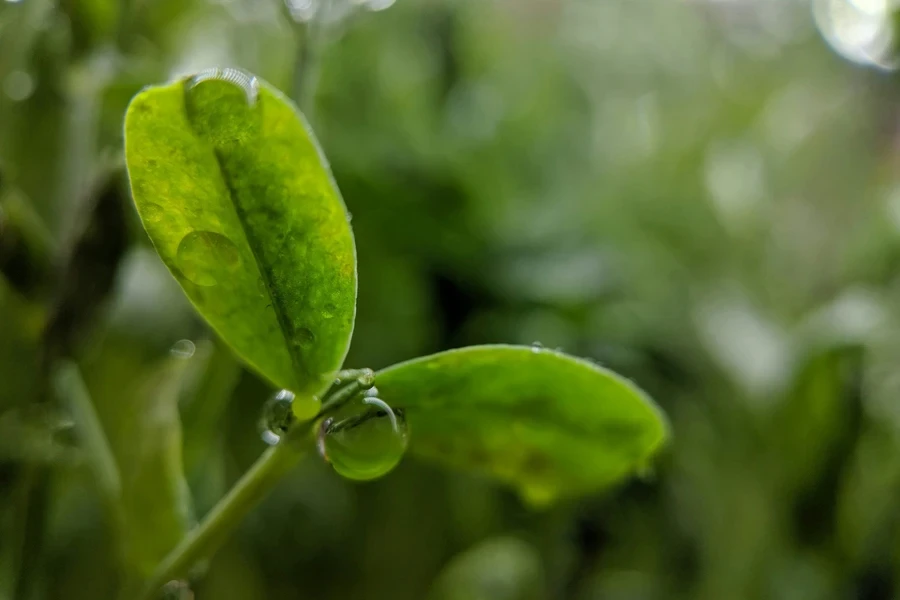
Before germination, microgreen seeds should remain immersed in water for no less than 12 hours, and the water used in this process must be clean to avoid the risk of contamination or rotting of the seeds.
Many growers use a nebulizer for irrigation during the germination phase, which helps to maintain humidity levels. However, after the seedlings have sprouted and emerged from the substrate, irrigation must occur from below, acting directly on the soil. Growing microgreens should be watered daily, especially in warmer months, making sure that the substrate remains moist.
The cultivation cycle is different for each species of microgreen: it generally lasts for one to three weeks and is calculated from the moment germination has occurred. When the first true leaves appear, the seedlings are ready to be harvested by hand or by cutting the seedlings from their base.
Since they perish easily, microgreens are best consumed as soon as possible to ensure they retain their freshness and nutritional value. Alternatively, they can be stored, after washing, at fridge temperature for up to two weeks in plastic containers closed with cling film.
Conclusion
Microgreens offer a sustainable, nutrient-rich food solution that is simple to grow and accessible to everyone, from home gardeners to commercial businesses. Their increasing popularity, fueled by their health benefits and ease of cultivation, has created new market opportunities for retailers and suppliers.
By embracing this trend, businesses can meet the rising demand for microgreens and capitalize on this expanding global market. Whether for personal use or wholesale, microgreens offer a fresh and profitable avenue in the ever-evolving world of agriculture.
